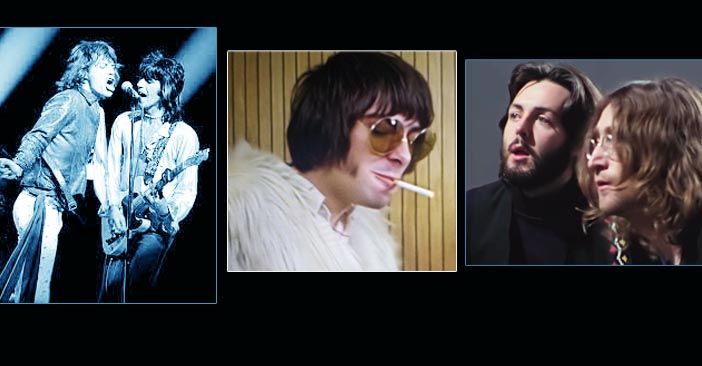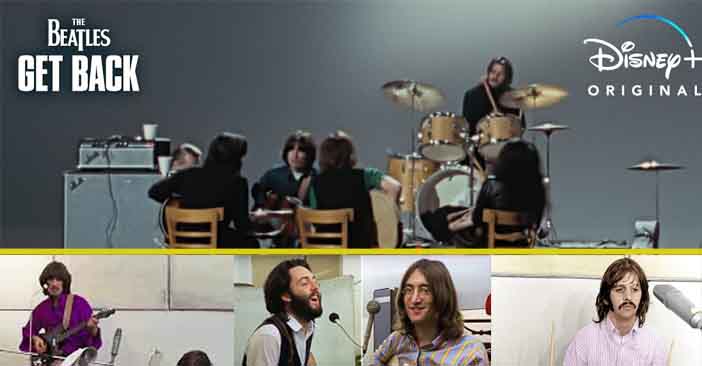
In 2012, legendary producer and sound engineer Glyn Johns was inducted into the Rock and Roll Hall of Fame.
After disembarking from a Los Angeles to London flight in February 1969, the recording engineer and producer Glyn Johns went straight to a studio to work with the Beatles on the album that became “Abbey Road.” That was followed by an all-night session with the Rolling Stones for the album “Let It Bleed,” after which he rejoined the Beatles, then concluded his marathon that day by recording Jimi Hendrix live at Royal Albert Hall.

Now Mr. Johns has written a memoir, “Sound Man” (Blue Rider Press), in which he explains, among other things, what a record producer actually does: guide musicians in “painting a picture in sound.” Published last month, the book offers behind-the-scene glimpses of his studio work — which in the 1970s and 1980s expanded to artists like the Eagles, the Clash, Howlin’ Wolf, Eric Clapton, John Hiatt, Emmylou Harris and Linda Ronstadt — and the working relationships he forged.
“My objective was not kiss and tell, but an observation of the industry over the last 50 years, how it has developed, and about the characters I’ve met,” he said. “I just love making records, and that’s never going to change. I can’t wait to get back in.” (To read the full article from The New York Times, click Here)
Producer and engineer Glyn Johns has operated the recording studio knobs on what appears to be the majority of the great rock albums of the Sixties and Seventies. To name but a handful: the Rolling Stones’ Beggars Banquet and Let It Bleed, Small Faces’ Ogden’s Nut Gone Flake, Joe Cocker’s Joe Cocker!, Led Zeppelin’s Led Zeppelin, Traffic’s Traffic, Bob Dylan’s Self Portrait. And those are only the albums he worked on in 1968 and 1969. (To read from Telegraph Click Here)
Nor is that the sum total of his endeavours during those two years – Johns ended 1969 mixing Get Yer Ya-Ya’s Out!, the live album that captured the Stones at their Sixties’ peak. Recorded in Baltimore and at New York’s Madison Square Garden, it was one of 14 records, give or take, that he made back-to-back with the band over a stellar, decade-long run from the beginning of their recording career in 1965.
And he began 1969 embedded with another group of key collaborators – a popular four-piece from Liverpool called the Beatles – as they gathered to record their album, Let It Be; a three-week project now immortalised by the director Peter Jackson in his epic documentary series Get Back.
In case you missed him amidst the director’s eight hours of magisterial soundcheck longueurs, gripping song-creation-in-real-time and herculean nicotine intake, Johns was the one who looked like the resident rock star. While Paul McCartney, John Lennon, George Harrison and Ringo Starr were either dressed like Apple scruffs or in their wives’ clobber – the better to sink into the long and winding recording process – their de facto producer was the studio dandy. Ever since the series launched last November, fans and critics alike have been waxing lyrical about his series of natty outfits and statement accessories – from a goatskin coat to beach-ready neck scarves, tinted sunglasses and a snake-skin jacket.

“It's bloody crocodile skin!” hoots the genial Johns, over afternoon tea and biscuits in his home in rural West Sussex. “I could never have afforded that. I was given it by Keith Richards – a rare moment of generosity from him!” He guffaws and then continues.
“We went to Paris for some reason, and he asked me to go to his hotel room. This parcel was delivered from some French clothes manufacturer. The jacket didn't fit him so he told me to try it and it fitted. He said: ‘Well, you can have it.’ I thought: ‘Ooh, great!’ Must have cost a fortune.”
Get Back, which culminates in the band’s famous concert on the roof of Apple in London’s Savile Row, is exhaustive (and, for non-Beatles nerds, occasionally exhausting). But, from Johns’ perspective, is there anything Peter Jackson missed when he edited the 60 hours of footage and 150 hours of audio originally captured by the director Michael Lindsay-Hogg?

“On the second day, Paul stopped playing and asked me what to do with the intro of the song,” he replies (he can’t remember which song). Assuming that George Martin was producing the album, Johns was surprised to be consulted.
“I was booked by Paul to engineer and to record the concert,” he says. “So he asked me to go to the rehearsals, because he wanted me involved from day one, so that I knew the material. And it never crossed my mind that it was a bit odd that Paul had booked me, not George.”
As it happened, the Beatles’ long-standing fifth man in the studio would only “come by for five or 10 minutes every day and just check out what was going on”, leaving Johns to undertake the bulk of the production. “But they didn't need a bloody producer,” he says. “They were quite capable of doing it themselves.”
The Rolling Stones were a different matter. He praises Mick Jagger as “the consummate professional. No matter what else you think about him, he's fantastic to work with. Really knows what he's doing, has a fine ear, and he's a bloody good producer.” But Johns says his relationship with the band started to fray following 1971’s Sticky Fingers.
“I'd had enough,” he says. “They took too long. I was fed up with sitting around. There was too much farting about and waiting for Keith to show up.”

“The excitement had gone out of it," he continues. “And the situation with Brian [Jones] wasn't clever.” The Stones guitarist drowned in the swimming pool at his home, aged 27, in July 1969, just one month after being dismissed from the band for increasingly erratic behaviour caused by his alcohol and drug problems.
Nonetheless, Johns believes the band did “absolutely the right thing” in kicking Jones out. “The last sessions that I did with them with him, it was really sad, because he couldn't even hold a chord down. He wasn't delivering on any level.”
